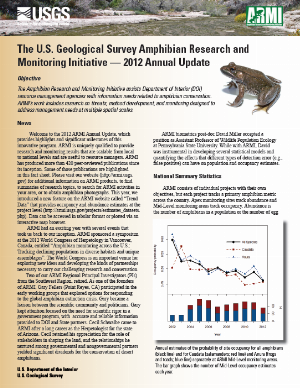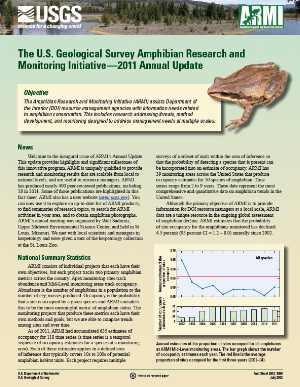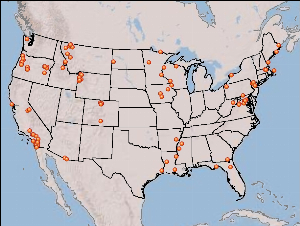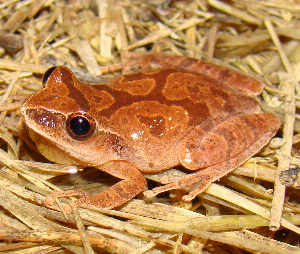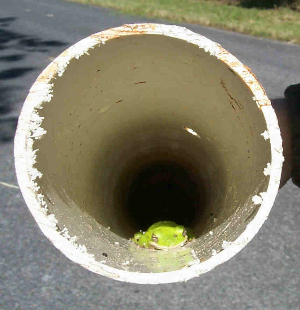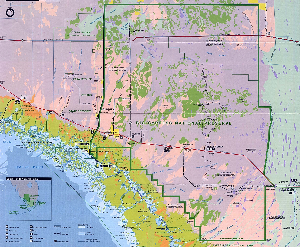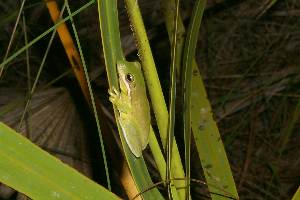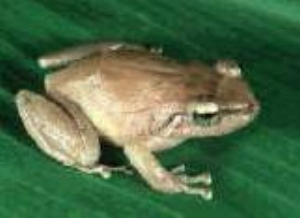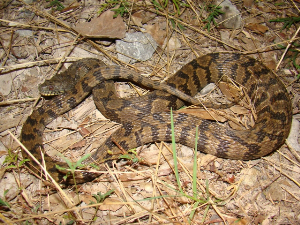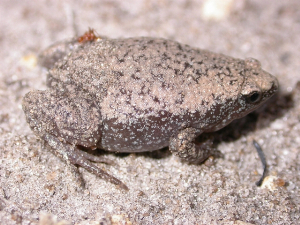Search ARMI Database
Search term(s)
Contribution Number
Search Results
65 record(s) found.
Papers & Reports ARMI 2012 Annual Update
Full text: http://armi.usgs.gov/docs/ARMI%202012%20Annual%20Update.pdf
Papers & Reports ARMI 2011 Annual Update
Full text: http://armi.usgs.gov/docs/ARMI%202011%20Annual%20Update.pdf (PDF*)
Papers & Reports Wetland Reserve Program enhances site occupancy and species richness in assemblages of anuran amphibians in the Lower Mississippi Valley, USA
Papers & Reports Co-Occurrence of Invasive Cuban Treefrogs and Native Treefrogs in PVC Pipe Refugia
Papers & Reports Trends in amphibian occupancy in the United States
Papers & Reports The U.S. Geological Survey Amphibian Research and Monitoring Initiative: 2011 Annual Update
Papers & Reports A quantitative assessment of the conservation benefits of the Wetlands Reserve Program to amphibians
Papers & Reports Diet of the invasive Cuban Treefrog (Osteopilus septentrionalis) in pine rockland and mangrove habitats in South Florida
News & Stories New publication: Solving statistical challenges in monitoring amphibian populations
There are many sampling and statistical challenges to evaluating the effects of management actions on a community of often cryptic and occasionally rare species. ARMI PIs Susan Walls and Hardin Waddle teamed with USGS statistician Robert Dorazio to develop an extension of a single species model to estimate simultaneous temporal changes in probabilities of detection, occupancy, colonization, extinction and species turnover using ARMI data collected in the Lower Mississippi Alluvial Valley of Louisiana from 2002 – 2006.
The statistical modeling approach is reported in a recent issue of The Journal of Wildlife Management. The paper demonstrates how the flexibility and utility of occupancy models makes them such a valuable tool for asking the different kinds of questions that are relevant to resource managers.
Susan C. Walls, J. Hardin Waddle and Robert M. Dorazio. 2011. Estimating Occupancy Dynamics in an Anuran Assemblage from Louisiana, USA. The Journal of Wildlife Management, 75(4):751-761. 2011.
Papers & Reports Recovery of native treefrogs after removal of nonindigenous Cuban treefrogs, Osteopilus septentrionalis
Papers & Reports Estimating occupancy dynamics in an anuran assemblage from Louisiana, USA
Papers & Reports Use of amphibians as ecosystem indicator species
Papers & Reports Efficacy of automatic vocalization recognition software for anuran monitoring
Papers & Reports Using personal digital assistants to collect wildlife field data
Papers & Reports Modeling the effect of toe clipping on treefrog survival: beyond the return rate
Papers & Reports A new parameterization for estimating co-occurrence of interacting species
Papers & Reports Eleutherodactylus coqui: Geographic distribution
Papers & Reports Osteopilus septentrionalis: Geographic distribution
Papers & Reports A portable non-invasive trapping array for sampling amphibians and reptiles
Papers & Reports Herpetofaunal Inventories of the National Parks of South Florida and the Caribbean: Volume III. Big Cypress National Preserve
Several sampling methods were used to accomplish these goals. Visual encounter surveys and anuran vocalization surveys were conducted in all habitats throughout the park to estimate the proportion of sites or proportion of area occupied (PAO) by each amphibian species in each habitat. Opportunistic collections, as well as limited drift fence data, were used to augment the visual encounter methods for highly aquatic or cryptic species. A total of 545 visits to 104 sites were conducted for standard sampling alone, and 2,358 individual amphibians and 374 reptiles were encountered. Data analysis was conducted in program PRESENCE to provide PAO estimates for each of the anuran species.
All of the amphibian species historically found in Big Cypress National Preserve were detected during this project. At least one individual of each of the four salamander species was captured during sampling. Each of the anuran species in the preserve was adequately sampled using standard herpetological sampling methods, and PAO estimates were produced for each species of anuran by habitat. This information serves as an indicator of habitat associations of the species and relative abundance of sites occupied, but it will also be useful as a comparative baseline for future monitoring efforts.
In addition to sampling for amphibians, all encounters with reptiles were documented. The sampling methods used for detecting amphibians are also appropriate for many reptile species. These reptile locations are included in this report, but the number of reptile observations was not sufficient to estimate PAO for reptile species. We encountered 35 of the 46 species of reptiles believed to be present in Big Cypress National Preserve during this study, and evidence exists of the presence of four other reptile species in the Preserve.
This study found no evidence of amphibian decline in Big Cypress National Preserve. Although no evidence of decline was observed, several threats to amphibians were identified. Introduced species, especially the Cuban treefrog (Osteopilus septentrionalis), are predators and competitors with several native frog species. The recreational use of off-road vehicles has the potential to affect some amphibian populations, and a study on those potential impacts is currently underway. Also, interference by humans with the natural hydrologic cycle of south Florida has the potential to alter the amphibian community.
Continued monitoring of the amphibian species in Big Cypress National Preserve is recommended. The methods used in this study were adequate to produce reliable estimates of the proportion of sites occupied by most anuran species, and are a cost-effective means of determining the status of their populations.

